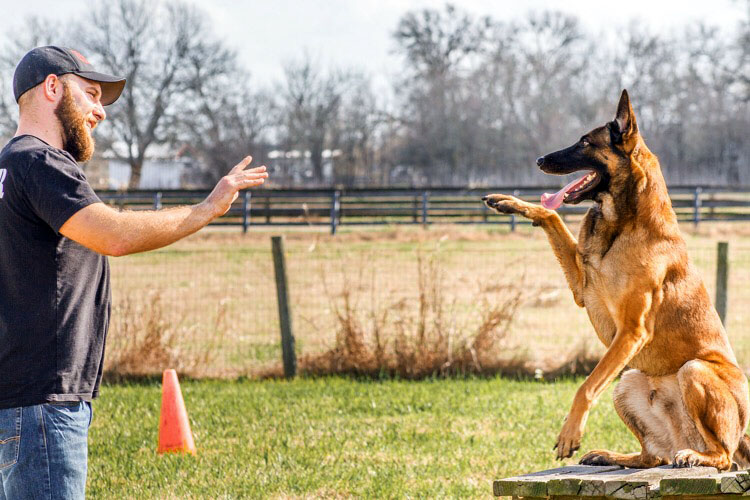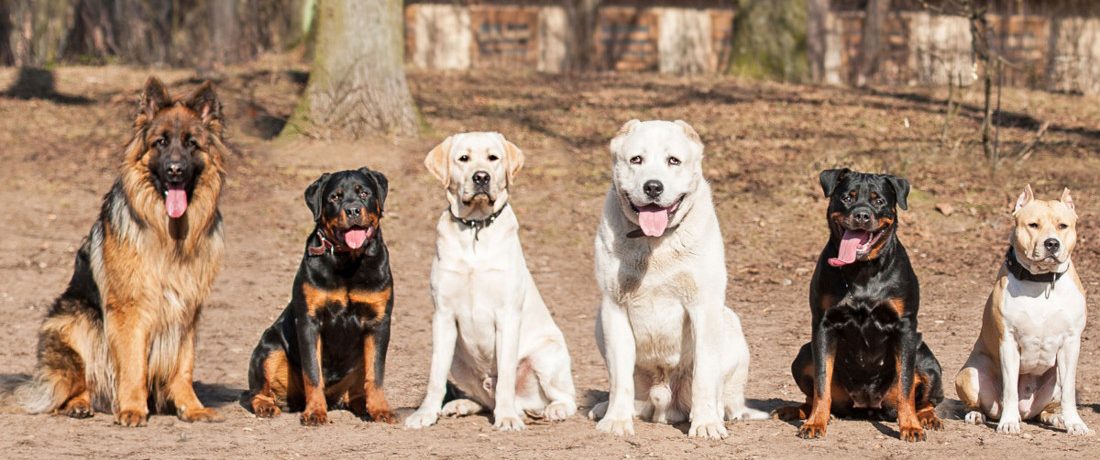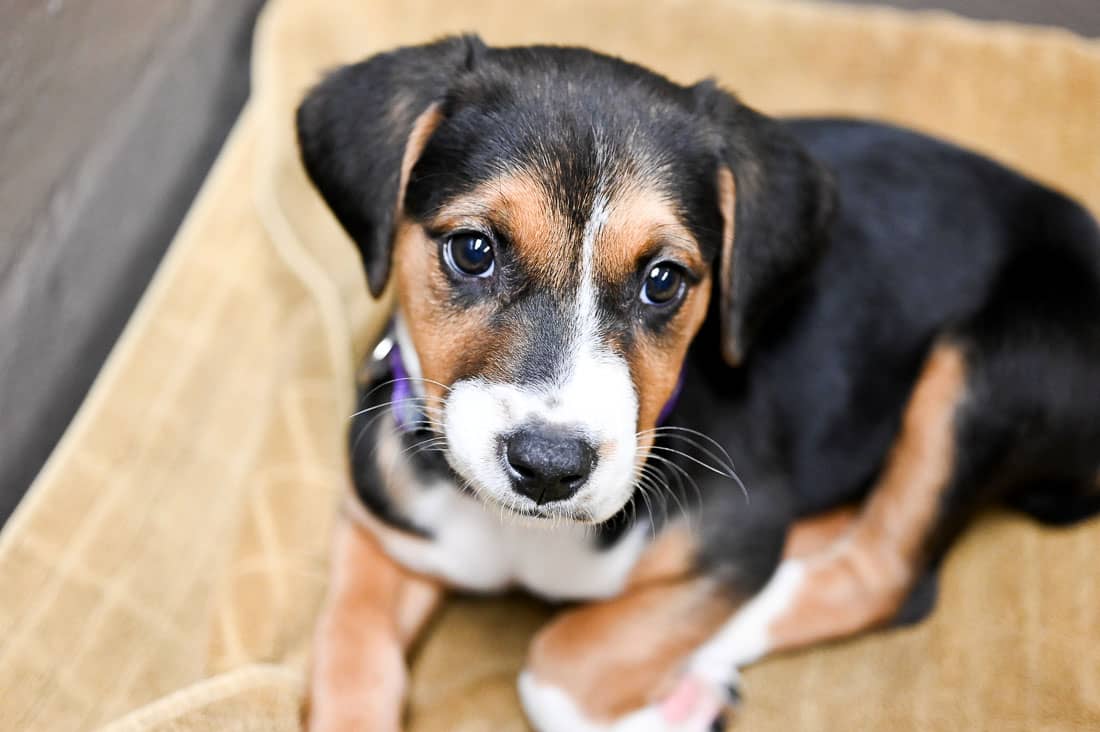The Advantages of Early Dog Training for a Well-Behaved Pet
The Advantages of Early Dog Training for a Well-Behaved Pet
Blog Article
Vital Tips for Successful Dog Training: A Guide for Family Pet Owners
Reliable pet dog training is a complex process that needs a tactical method customized to both the pet dog's personality and the owner's purposes. Key components such as establishing regular commands, using favorable support, and helping with early socializing play essential duties in fostering a well-adjusted canine companion. Many family pet proprietors experience difficulties that can hinder progression, leading to frustration and unpredictability. Understanding just how to navigate these obstacles can dramatically improve the training experience, inevitably changing the relationship in between proprietor and pet dog. What are the crucial techniques that can be utilized to make certain success in this undertaking?
Comprehending Dog Behavior
Recognizing pet dog actions is crucial for reliable training and cultivating an unified relationship in between dogs and their proprietors. dog training. Canines communicate mostly via body language, articulations, and actions, making it important for owners to analyze these signals accurately.

Socialization plays a substantial role in dog behavior; exposure to various atmospheres, people, and various other animals can substantially impact a pet dog's personality. Variables such as type characteristics and individual character ought to guide training approaches, as some breeds may have particular behavior characteristics that necessitate tailored strategies. By recognizing these elements, proprietors can create a helpful environment that urges positive behavior, bring about successful training end results and a deeper bond with their family pets.
Developing Regular Commands
Efficient interaction with your canine starts with establishing consistent commands. This fundamental component of training is vital for fostering understanding in between you and your pet dog. Uniformity in the commands you use guarantees that your pet dog can reliably link certain words or phrases with the desired habits.
When selecting commands, pick clear, distinct words that are very easy to claim and distinguish from one another. Avoid utilizing similar-sounding commands that may confuse your dog. Utilizing "rest" and "remain" is ideal, but "sit" and "hit" could lead to misunderstandings.
Furthermore, maintain the same tone and volume for each command. Canines are sensitive to vocal cues, so differing your tone can create confusion.
It is similarly important to make certain that all relative get on the very same web page regarding the commands used. A united front in command usage will certainly stop mixed signals and enhance the discovering process.
Favorable Reinforcement Techniques
The power of positive reinforcement in pet dog training depends on its ability to urge wanted actions through benefits and praise. This method is based in the concept that habits complied with by positive end results are most likely to be duplicated. By incorporating favorable support right into your training routine, you can properly shape your dog's habits in a useful way.
To carry out positive reinforcement, it's vital to identify what motivates your pet, whether it be deals with, toys, or spoken appreciation. When your dog carries out a desired action, such as sitting on command, promptly award them with a treat or love. This organization between the command and the positive result reinforces their understanding.
It's important to timing the learn the facts here now rewards properly; providing the reinforcement within secs of the preferred habits aids your canine make the link (dog training). Additionally, consistency is key-- make sure that all member of the family utilize the exact same commands and incentive navigate to this website systems to prevent complication

Progressively, you can reduce the frequency of treats as your canine finds out the actions, transitioning to applaud or intermittent incentives. This method not only cultivates a solid bond between you and your canine however also advertises a positive learning atmosphere, making educating a satisfying experience for both.
Socialization and Interaction
Constantly exposing your pet to a variety of settings, individuals, and various other pets is essential for their social development. Socialization must begin early, preferably throughout the important home window of 3 to 14 weeks, when puppies are most responsive to new experiences. Nonetheless, older pet dogs can additionally profit from recurring socialization initiatives.
Introduce your pet dog to various settings, such as parks, pet-friendly stores, and city areas. This exposure helps them adapt to different stimuli, reducing anxiety and concern responses. Urge positive interactions with other canines and people, guaranteeing that these encounters are regulated and secure to foster self-confidence.
Utilize structured playdates with well-mannered canines, as this can enhance your canine's social skills and show them appropriate habits. Obedience classes and training sessions additionally offer exceptional chances for socialization, enabling your canine to communicate with others in a monitored setting.
Screen your pet dog's body movement during communications, as this will help you assess their convenience level. Gradually boost direct exposure to even more tough circumstances while making sure that each experience is positive. A well-socialized pet is most likely to display balanced behavior, making them a joy to have in any kind of setting.
Addressing Typical Training Obstacles
Every pet proprietor will encounter training challenges at some time, despite their dog's age or socializing level. Recognizing common concerns such as stubbornness, diversions, and fearfulness can help in creating effective approaches for improvement.

Progressively present disturbances as the pet dog becomes more competent in commands. Short, regular training sessions are additionally efficient in maintaining attention.
Fearfulness can hinder a canine's discovering procedure. Steady desensitization to the resource of fear, coupled Continued with favorable support, can help relieve anxiousness. Persistence is important; never force a canine into a scenario that triggers distress, as this may aggravate the problem.
Ultimately, understanding and attending to these typical challenges with an organized method will certainly promote a more efficient training experience, strengthening the bond in between canine and proprietor while promoting reliable knowing.
Final Thought
In recap, successful pet training relies upon an extensive understanding of canine habits, the establishment of regular commands, and the application of positive support techniques. Socializing plays an important function in developing well-adjusted family pets, while addressing typical training obstacles needs patience and versatility. By implementing these important approaches, animal proprietors can cultivate a solid bond with their dogs and promote preferable actions, inevitably resulting in an unified connection in between people and their canine buddies.
Comprehending dog habits is necessary for effective training and promoting an unified connection between dogs and their proprietors.Socializing plays a considerable function in canine behavior; exposure to various atmospheres, individuals, and various other animals can significantly affect a dog's personality.The power of positive support in pet training exists in its capacity to encourage preferred behaviors through benefits and appreciation. By incorporating favorable reinforcement into your training regimen, you can efficiently shape your dog's actions in a positive way.
In summary, effective pet training relies on a thorough understanding of canine habits, the establishment of regular commands, and the application of positive reinforcement methods.
Report this page